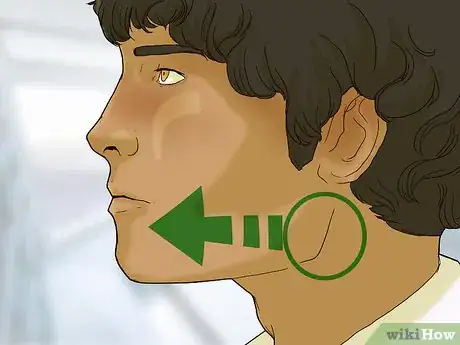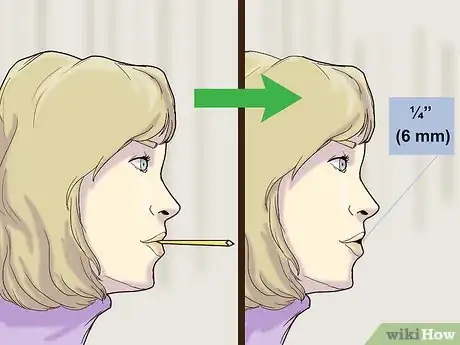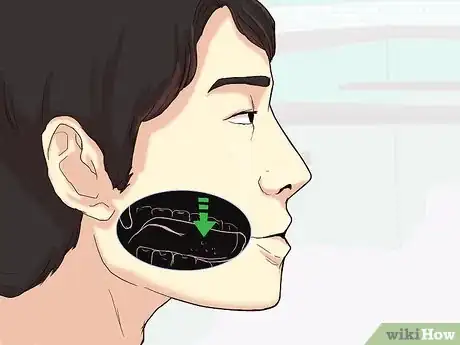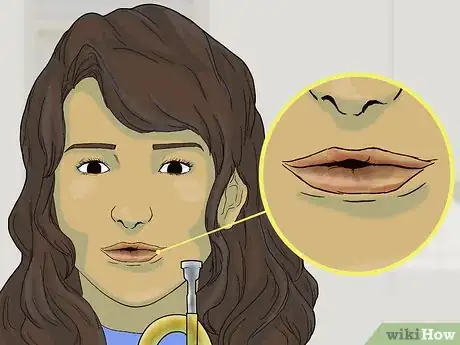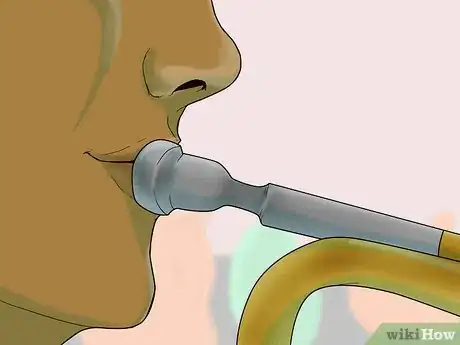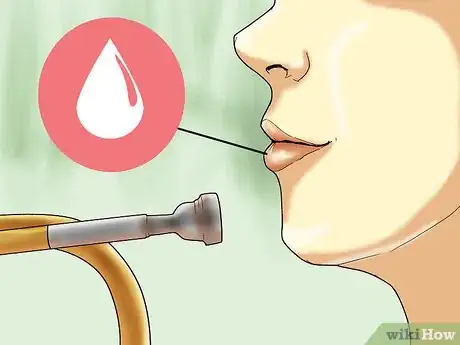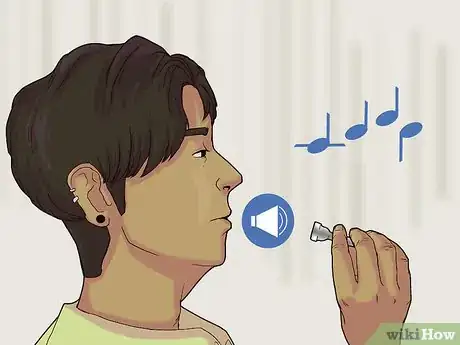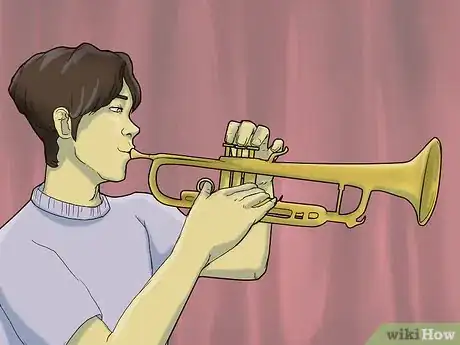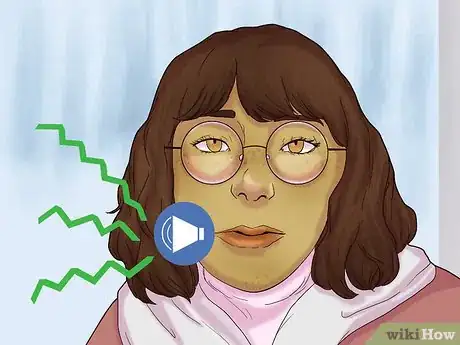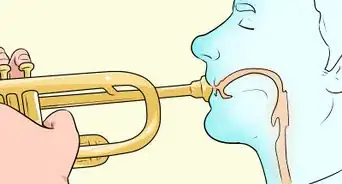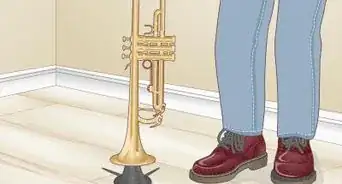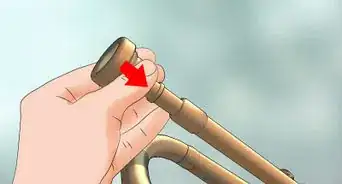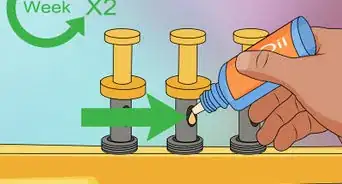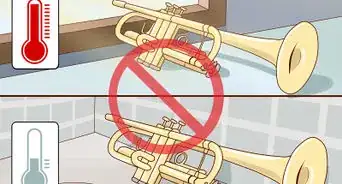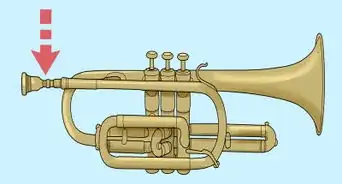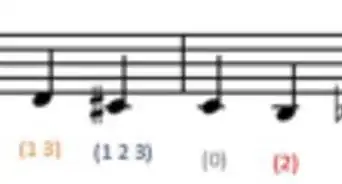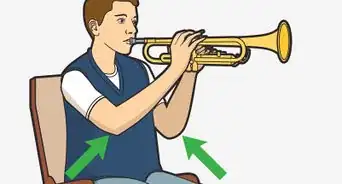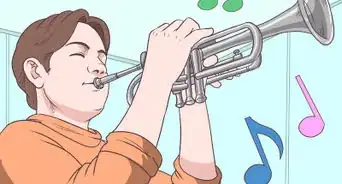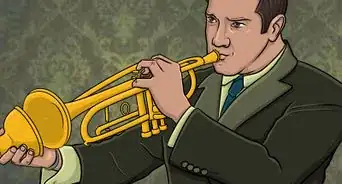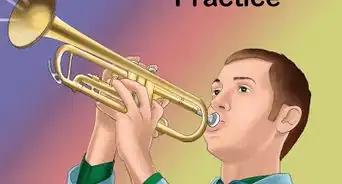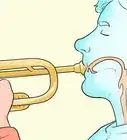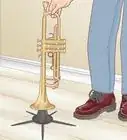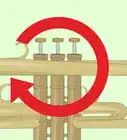This article was co-authored by wikiHow Staff. Our trained team of editors and researchers validate articles for accuracy and comprehensiveness. wikiHow's Content Management Team carefully monitors the work from our editorial staff to ensure that each article is backed by trusted research and meets our high quality standards.
wikiHow marks an article as reader-approved once it receives enough positive feedback. In this case, 81% of readers who voted found the article helpful, earning it our reader-approved status.
This article has been viewed 158,827 times.
Learn more...
Trumpet embouchure involves the placement of your jaw and lips in relation to the trumpet mouthpiece. Learn to push your jaw forward, keep your teeth separated, and your tongue low in your mouth. Press your lips together but allow airflow, press your lips lightly against the mouthpiece, and always keep your lips moist. Strengthen your embouchure by adjusting it for different notes, keeping good upright posture, and practicing buzzing your lips frequently until you get the technique down.
Steps
Aligning Your Jaw and Teeth
-
1Push your jaw forward to line up your lips. Most people naturally have an overbite, which means their lips are not lined up on top of each other. Moving your jaw forward situates your bottom lip directly under your top lip. Be sure not to push your jaw too far forward. The right spot aligns your top and bottom teeth straight up and down.[1]
- Practice moving your jaw forward and backward while you buzz your lips to hear how this affects the buzz. You can also feel how it directs the airflow either down to your chin or up to your nose.
- Aligning your teeth directs the airflow straight forward into the mouthpiece for maximum airflow.
-
2Leave about ¼” (6 mm) between your teeth. Do not clamp your teeth together as this will hinder the airflow. Your teeth should be at least ¼” (6 mm) and at most ½” (12 mm) apart. Your jaw should feel like it is hanging loosely.[2]
- Get the feel for this placement by putting the narrow end of the mouthpiece between your teeth. You can also use a pen or pencil, or a straw, which can help you test your airflow.
Advertisement -
3Keep your tongue low in your mouth. Proper embouchure allows just the right amount of air to pass through your lips. If your tongue is on the roof of your mouth or moving around your mouth, it will block the airflow.[3]
- Your tongue will move and tap your lips as you play the notes, but when you aren't tonguing notes, it should rest low in your mouth.
Positioning Your Lips
-
1Press your lips together loosely. The buzz you need to make only happens if your lips are touching. Lips that are too loose will let the air pass through without making a buzz sound. If your lips are pressed too tightly air can't escape at all. Keep the corners of your mouth wide and firm.[4]
- To learn the right tightness of the lips, practice making them too tight and too loose. You'll learn to feel what the balanced middle point is.
- Buzz your lips when they are tight and when they are loose and listen to the difference in sound.
-
2Set your lips lightly against the mouthpiece. To buzz your lips properly, they need to be fully against the rim of the mouthpiece. Do not press them too tightly against the mouthpiece as this will stop them from buzzing. Align the center of your lips with the center of the mouthpiece.
- Practice this with the mouthpiece and without the horn. Press your lips firmly against the mouthpiece and notice how you can't buzz your lips. Pull your lips away so they barely touch and notice how the buzz doesn't transfer through the mouthpiece.
- Using this practice technique will help you find the right amount of pressure to produce a buzz.
-
3Keep your lips moist. Wet lips help your lips buzz while you play. Find the balance between too dry and too wet. Learn the right moistness that creates sound but doesn't cause your lips to slip off of the mouthpiece.[5]
- Dry lips will keep you from making a full buzz sound. Overly wet lips will cause your mouth to slip off of the mouthpiece.
Improving Your Embouchure
-
1Adjust your embouchure for different notes. The buttons and valves on the trumpet have the largest impact on changing notes, but your embouchure is important too. Tighten your embouchure when playing high notes and loosen it when playing low notes.
- Without your mouthpiece or trumpet, practice tightening and loosening your embouchure and notice how the pitch of the buzz changes. This effect is amplified when blown through the horn.
- Next, practice with just the mouthpiece and notice the siren-like sound you can make by changing the embouchure shape.
-
2Maintain upright posture. Your embouchure is not effective when you don't have enough air. Sitting up straight keeps your airways open so that you can blow with enough force to produce the full scale of notes. Good posture also keeps your trumpet raised.[6]
- Slump down in your chair and notice how you can't breathe as deeply as when you are sitting upright. Practice good posture when you aren't playing so you get used to sitting up straight.
-
3Practice buzzing your lips everyday. Your lips will get tired easily when you are first learning your embouchure. Practice holding it for a few minutes. Then practice buzzing for a few minutes. Add a little bit of time each day so you can build up your endurance.
- Since many musical pieces are five to ten minutes or longer, it's important that you can buzz your lips for a long time without getting tired.
-
4Watch instructional videos. If you are having trouble with a particular part of the embouchure, look for videos that describe that part or the whole process. Watching someone form the embouchure may give you a better idea than reading about it. Ask a teacher or mentor if they have any videos you could borrow, or search online for videos.
- You'll also be able to see the way players hold the trumpet and sit.
-
5Ask an instructor for tips. If you are in a band class at school, or take lessons with a mentor, ask them to look at your embouchure or listen as you play to see what you are doing wrong. They will be able to help you with specific problems you are facing with your embouchure.
- If you don't have anyone to ask, find a local instructor who would be willing to help you out. You may be able to get some quick tips without taking a full, paid lesson.
Community Q&A
-
QuestionI get tired while blowing the trumpet, and my lips hurt. Is there any way to avoid this?
 PurpleOreoCommunity AnswerDon't press the trumpet into your lips hard. Also, practice at home and your lips will build an embouchure memory, and it will be easier to play.
PurpleOreoCommunity AnswerDon't press the trumpet into your lips hard. Also, practice at home and your lips will build an embouchure memory, and it will be easier to play. -
QuestionHow can I practice to fix the tight, pinched tone in my trumpet?
 Community AnswerKeep your throat open and take deep breaths. A deep breath should fill your entire lungs.
Community AnswerKeep your throat open and take deep breaths. A deep breath should fill your entire lungs. -
QuestionWhen playing a Bb trumpet, how can I match a piano playing a C scale?
 Jelke de JongCommunity AnswerTo match a piano playing a C scale, you should play the D scale, since the piano, which is an instrument tuned in C, is a whole step higher than the trumpet tuned in Bb.
Jelke de JongCommunity AnswerTo match a piano playing a C scale, you should play the D scale, since the piano, which is an instrument tuned in C, is a whole step higher than the trumpet tuned in Bb.
References
- ↑ http://www.bbtrumpet.com/embouchures.html
- ↑ http://www.tsmp.org/band/trumpet/wurtz_embouchure_beginners.html
- ↑ http://www.banddirector.com/article/pg-brasstrumpets/good-sound-begins-with-a-proper-embouchure-?productguide=324
- ↑ http://mes.seekonk.sharpschool.com/staff_directory/mr__anderson/how_to_form_your_embouchure__mouth_
- ↑ http://www.trumpethub.com/trumpet-embouchures-what-makes-a-good-embouchure/
- ↑ http://www.utc.edu/faculty/erika-schafer/musiceducatorresources/beginningtrumpeters.php
About This Article
To develop embouchure on the trumpet, you’ll need to work on the placement of your jaw and lips around the mouthpiece. Adjust your jaw so your top lip is directly above your bottom lip. Leave about ¼ inch between your teeth, let your jaw hang loosely, and keep your tongue low in your mouth. Once your jaw is in line, position your lips by pressing them together loosely and setting them lightly against the mouthpiece. Wet lips help you buzz when you play, so make sure to keep them moist to get the best sound possible. To learn how to improve your embouchure, keep reading!
